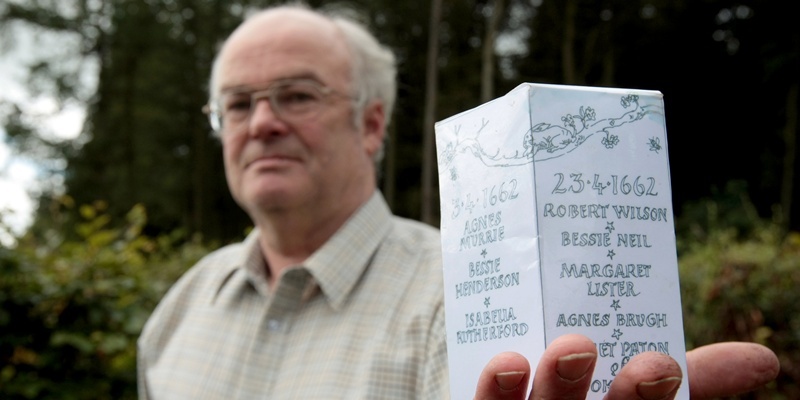Communities across Scotland are to commemorate one of the darkest days in the nation’s history, when superstition ruled the land.
He has created a witches’ maze with the names of the victims etched on an elaborate pillar at its heart.
It bears the names Agnes Murrie, Bessie Henderson, Isabella Rutherford, Robert Wilson, Bessie Neil, Margaret Lister, Agnes Brugh, Janet Paton of Crook of Devon, Janet Paton of Kilduff, Janet Brugh and Christian Grieve.
What records remain show that the evidence put before the court included “confessions” from the accused naming those in a local coven and details of their supposed meetings and rites.
Grieve is said to have been acquitted of witchcraft by the court, only to be hauled back within weeks, found guilty and executed.
Others escaped an appointment with executioners by virtue of pregnancy (Agnes Pittendreich) and extreme old age (Margaret Hoggin, who was nearly 80), while others are said to have succumbed to “fear and excitement” while awaiting trial.
Last weekend Lord Moncrieff began to mark the anniversary by inviting artist Pauline McGee to add her take on what took place as part of the annual Perthshire Open Studios event.
She said: “My paintings have been inspired by the emotive context of women’s lives at that time.”
Between 1550 and 1700, thousands of women and men across Scotland were arrested, tortured and executed after being accused of indulging in witchcraft.
The Scottish witch hunts declined after the 1660s as the “elite” of Scottish society began to take a more rational view of the world and superstitious beliefs loosened their hold.
As a result, the witch-prickers were eventually exposed as frauds and the nation’s developing legal system began to reject evidence from them.
The last witch was executed in 1727 and the law was abolished in 1736.
The 350th anniversary of 1662 will be marked by historians and locals as the year in which the witch craze was at its height.
Over 400 people were accused of witchcraft in Scotland, with many found guilty in sham trials before being hanged, decapitated and burned.
After witchcraft was made illegal in Scotland in the 16th century, an army of “witch-prickers” were employed to encourage people to confess to being in league with the devil.
The witch-hunters roamed the country putting countless poor souls to the test, which involved pricking them with a sharp metal object.
If the unfortunates did not bleed immediately it was taken as a sign that they had made a covenant with ‘Auld Nick’ and their deaths often followed.
Neighbours turned on each other to cry “witch” or “warlock”, often out of fear but sometimes simply out of vindictiveness and pettiness.
Many of those found guilty were widows, spinsters or just unpopular in their areas, while it was dangerous to display any eccentricities or habits that could be deemed odd.
Amid the paranoia, one Perthshire community became notorious for the witch trials held at the behest of a landowner and a court of dignitaries.
Tullibole Castle, near Crook of Devon, was once the home of William Halliday who, with his son John and three others, presided over a court that was responsible for what is often described as one of the worst cases of witchcraft persecution that Scotland has ever seen.
In 1662 the court sat five times, resulting in 11 people being sentenced to death for supposedly striking pacts with Satan.
Those who survived their trial and imprisonment were taken to a mound near the current village hall and strangled by the common hangman. Their bodies were then thrown on a fire.
The current owner of the castle, Lord Moncrieff, has long sought to create a memorial to the men and women who were put to death on the orders of his predecessor.
Continued…
